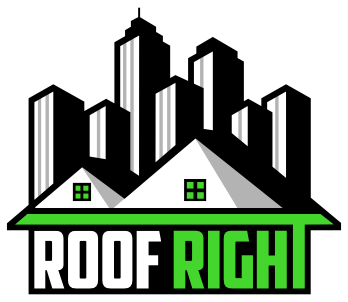A leaking roof can quickly escalate from a minor inconvenience to a significant problem, compromising the structural integrity of your home and leading to costly repairs. Timely and effective roof leak repair in Fort Myers, FL is crucial to safeguarding your property and ensuring the safety and comfort of your family. Understanding the intricacies of identifying and addressing roof leaks can save you from headaches and financial burdens.
Identifying Signs of a Roof Leak
Recognizing the early signs of a roof leak is essential for prompt intervention. Some common indicators of a roof leak include:
- Water Stains: Discoloration or water stains on your ceiling or walls often indicate water penetration from a leaky roof.
- Dampness or Mold: Damp spots or mold growth in your attic or along the rafters signifies moisture intrusion from a roof leak.
- Missing or Damaged Shingles: Missing, cracked, or curling shingles can create openings for water to seep into your home, leading to potential leaks.
- Sagging Roof: A visibly sagging roof may indicate structural damage caused by prolonged water exposure, emphasizing the urgency of addressing the issue promptly. In some cases, a roof replacement will be necessary.
Understanding these telltale signs can help you detect roof leaks early and prevent further damage to your property.
Steps for Effective Roof Leak Repair
Quickly addressing a roof leak in Fort Myers, FL, requires a systematic approach to ensure a lasting and effective solution. Follow these steps to tackle roof leaks efficiently:
- Locate the Source: Thoroughly inspect your roof, attic, and ceilings to pinpoint the exact location of the leak and determine the extent of the damage.
- Clear Debris: Remove any debris, leaves, or branches that may obstruct the roof or gutters, preventing proper water drainage and exacerbating the leak.
- Seal Cracks and Gaps: Use roofing cement or sealant to fill in any cracks or gaps in the roofing material, ensuring a watertight seal to prevent further water intrusion.
- Replace Damaged Shingles: Replace any damaged or missing shingles to fortify your roof’s protective barrier and prevent future leaks.
- Fix Flashing Issues: Repair any damaged or improperly installed flashing around chimneys, vents, or skylights to prevent water from seeping through vulnerable areas.
- Conduct a Final Inspection: Verify that the repairs effectively mitigate the leak and ensure no additional areas require attention to prevent future leaks.
By meticulously following these steps, you can address roof leaks in Fort Myers, FL, promptly and prevent further damage to your home.
Preventative Measures for Long-Term Prevention
Implementing preventative measures can significantly reduce the likelihood of future roof leaks, safeguarding your home and minimizing the need for frequent roof leak repair in Fort Myers, FL. Consider incorporating the following preventive strategies:
- Regular Inspections: Schedule routine roof inspections to identify and address potential issues before they escalate into significant leaks.
- Clear Gutters and Downspouts: Regularly clean and unclog gutters and downspouts to ensure proper water drainage and prevent water from backing up on the roof.
- Trim Overhanging Branches: Trim any overhanging branches near your roof to prevent abrasion and minimize the risk of damage to the roofing material.
- Maintain Attic Ventilation: Ensure proper attic ventilation to prevent the buildup of moisture and reduce the risk of condensation, which can lead to mold growth and roof damage.
- Professional Maintenance: Engage a professional roofing contractor to conduct regular maintenance and address any potential issues proactively.
By proactively implementing these preventative measures, you can significantly reduce the likelihood of roof leaks and preserve the integrity of your home.
Cost Considerations for Roof Leak Repair
Understanding the cost implications of roof leak repair in Fort Myers, FL, is crucial for effective budgeting and financial planning. Several factors can influence the overall cost of roof leak repair, including:
- Severity of Damage: The extent of the roof damage and the complexity of the repair required can impact the overall cost of the project.
- Materials Used: The type and quality of materials used for the repair, including sealants, flashing, and replacement shingles, can influence the overall cost.
- Labor Costs: The labor charges associated with hiring a professional roofing contractor to conduct the repairs will contribute to the total cost of the project.
- Additional Repairs: Unforeseen issues or underlying damage discovered during the repair process may necessitate extra repairs, leading to an increase in overall costs.
Obtaining multiple quotes from reputable roofing leak contractors in Fort Myers can help you compare costs and make an informed decision that aligns with your budget and requirements.
Choosing a Reliable Roofing Contractor
Selecting a reputable and experienced roofing contractor like Roof Right is paramount to the success of your roof leak repair project. Consider the following factors when choosing a roofing contractor:
- Licensing and Insurance: Ensure the Roof leak contractor in Fort Myers holds the necessary licenses and insurance to safeguard you and the workers during the repair process.
- Track Record: Review the contractor’s track record and customer reviews to gauge their expertise and reliability in delivering quality roofing services.
- Written Estimates: Obtain detailed written estimates from multiple contractors, outlining the scope of work, materials needed, and overall costs to facilitate an informed decision.
- Warranty Offerings: Inquire about the warranty offerings provided by the contractor to guarantee the durability and longevity of the repair work.
By conducting thorough research and due diligence, you can select a trustworthy roofing leak contractor in Fort Myers capable of delivering high-quality and reliable roof leak repair services.
